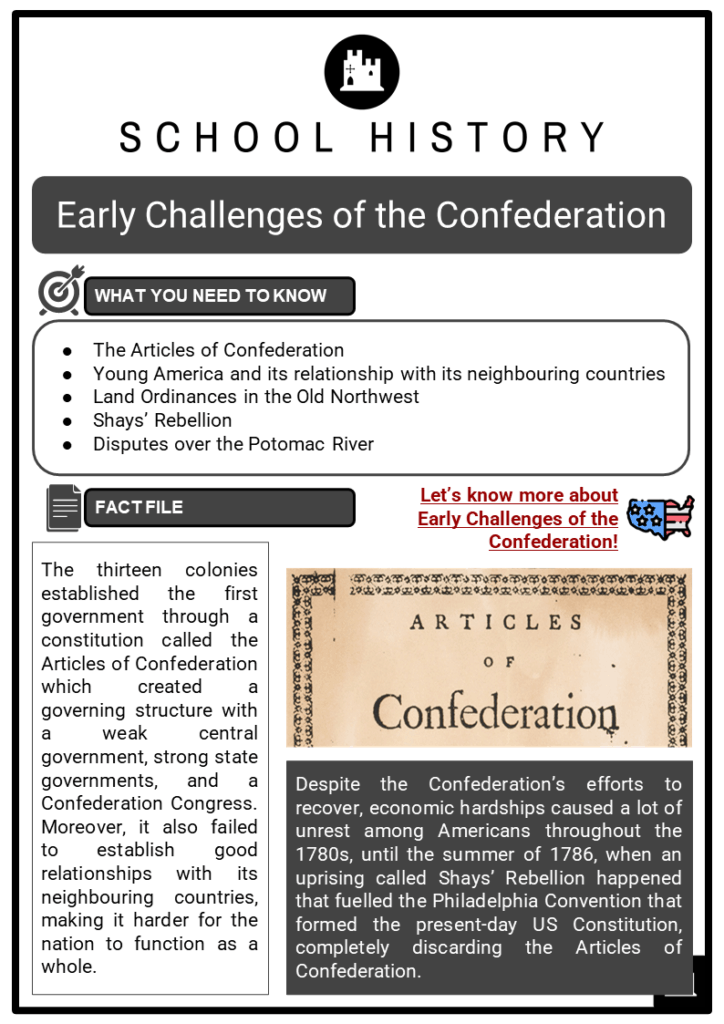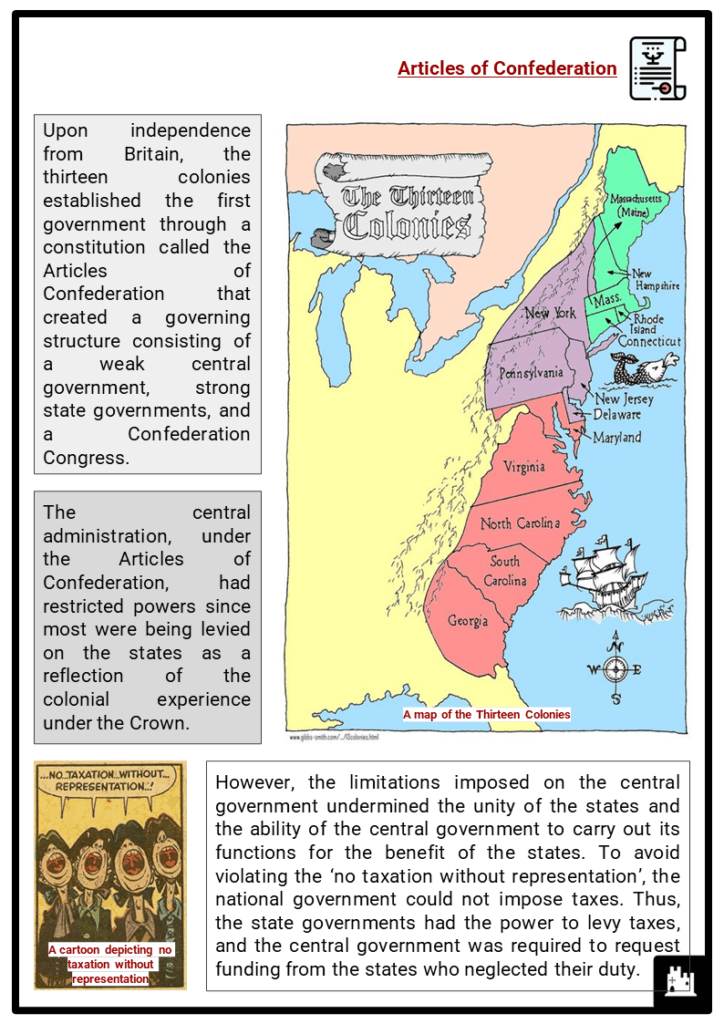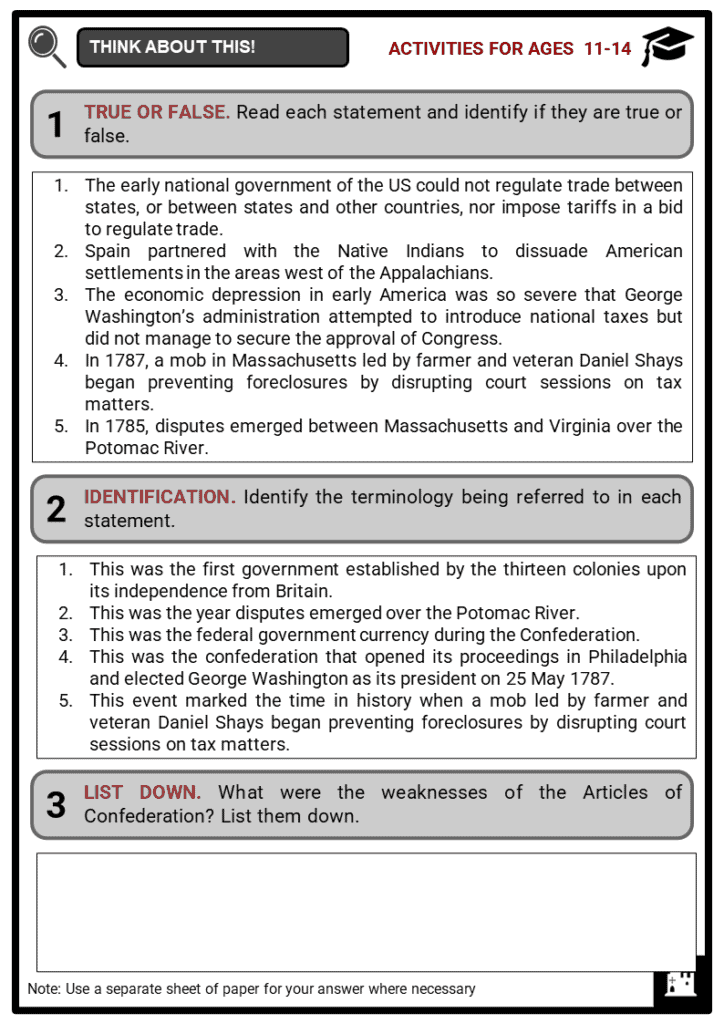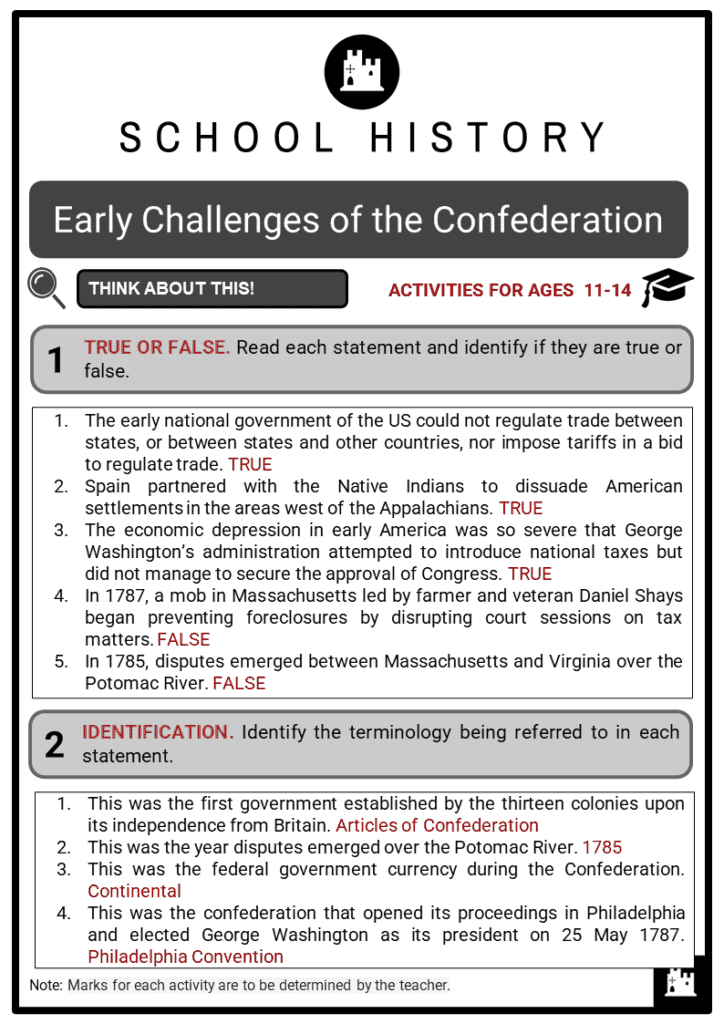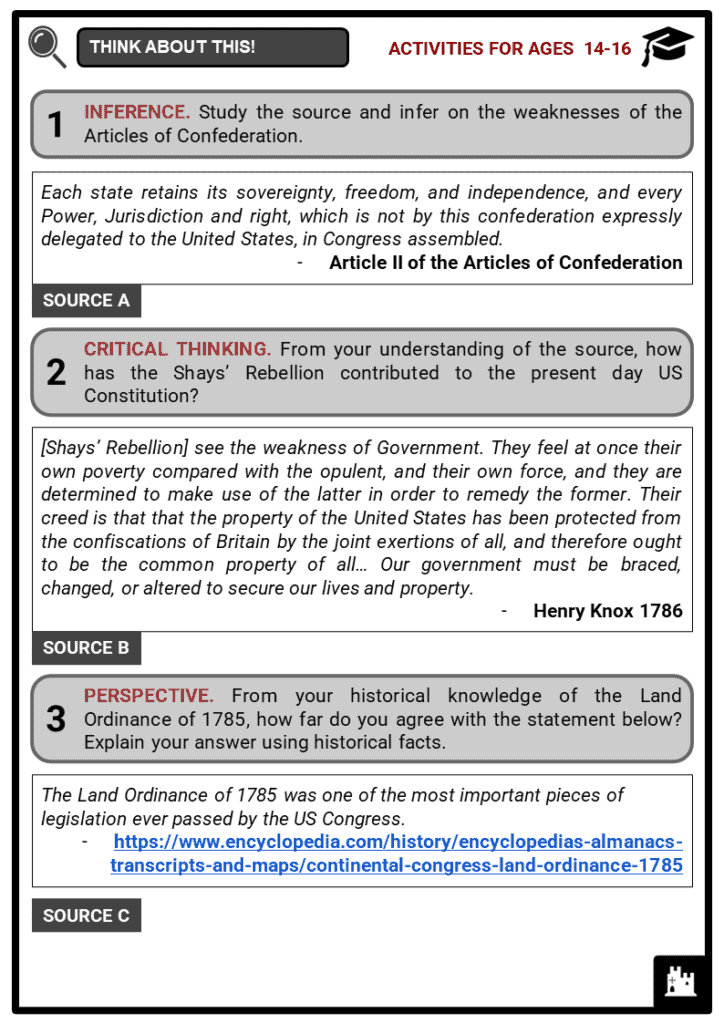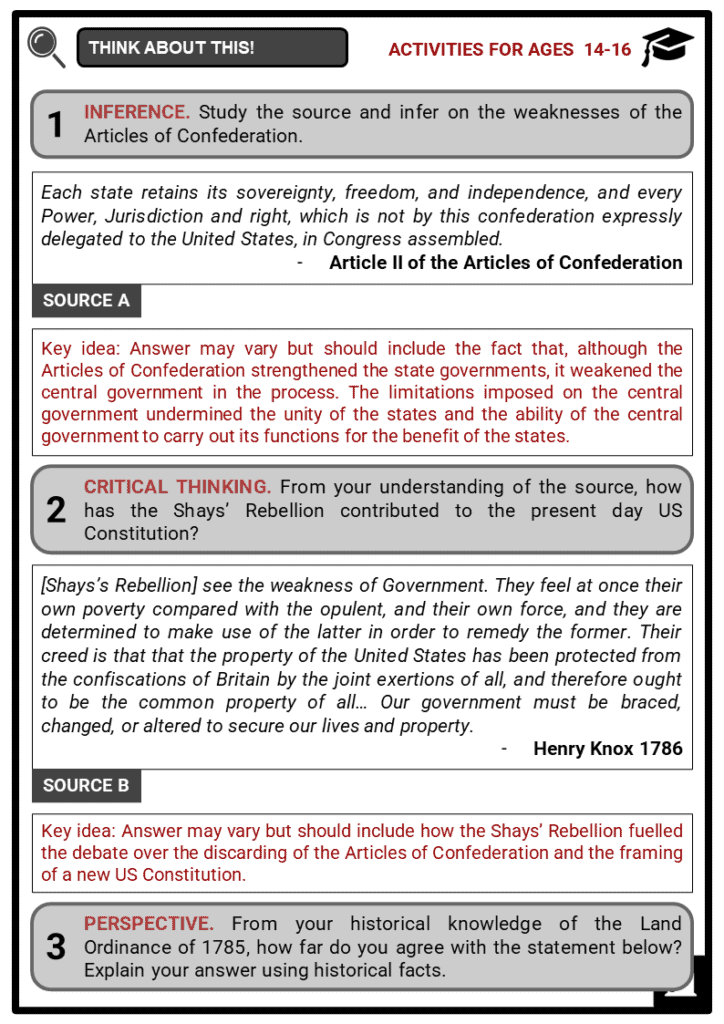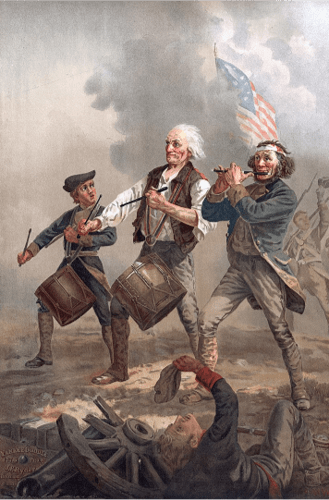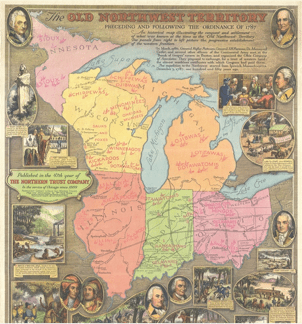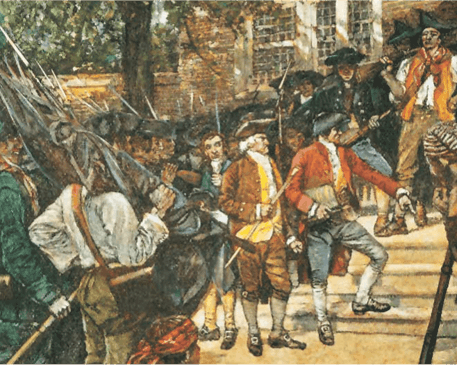Download Early Challenges of the Confederation Worksheets
Do you want to save dozens of hours in time? Get your evenings and weekends back? Be able to teach Early Challenges of the Confederation to your students?
Our worksheet bundle includes a fact file and printable worksheets and student activities. Perfect for both the classroom and homeschooling!
Table of Contents
Add a header to begin generating the table of contents
Summary
- The Articles of Confederation
- Young America and its relationship with its neighbouring countries
- Land Ordinances in the Old Northwest
- Shays’ Rebellion
- Disputes over the Potomac River
Key Facts And Information
Let’s know more about Early Challenges of the Confederation!
- The thirteen colonies established the first government through a constitution called the Articles of Confederation which created a governing structure with a weak central government, strong state governments, and a Confederation Congress. Moreover, it also failed to establish good relationships with its neighbouring countries, making it harder for the nation to function as a whole.
- Despite the Confederation’s efforts to recover, economic hardships caused a lot of unrest among Americans throughout the 1780s, until the summer of 1786, when an uprising called Shays’ Rebellion happened that fuelled the Philadelphia Convention that formed the present-day US Constitution, completely discarding the Articles of Confederation.
Articles of Confederation
- Upon independence from Britain, the thirteen colonies established the first government through a constitution called the Articles of Confederation that created a governing structure consisting of a weak central government, strong state governments, and a Confederation Congress.
- The central administration, under the Articles of Confederation, had restricted powers since most were being levied on the states as a reflection of the colonial experience under the Crown.
- However, the limitations imposed on the central government undermined the unity of the states and the ability of the central government to carry out its functions for the benefit of the states. To avoid violating the ‘no taxation without representation’, the national government could not impose taxes. Thus, the state governments had the power to levy taxes, and the central government was required to request funding from the states who neglected their duty.
- Without resources, the national government could not meet national obligations such as the payment of foreign debt, which was incurred during the revolution. Consequently, foreign governments became reluctant to lend money to the United States because the national government could not guarantee, or demonstrate, the ability to pay. The federal government currency, called the Continental, was also worthless.
- The national government could not regulate trade between states, or between states and other countries, nor impose tariffs in a bid to regulate trade. There was no mechanism to protect the states from foreign competitors and states imposed taxes on goods coming from other states, causing issues between the states.
Young Nation at Odds with its Neighbours
- The British Parliament, angered by the American Rebellion, decided they would continue to trade with America, without making concessions that would undermine the benefit of the Crown. Therefore, the navigation laws that prohibited trade with the British West Indies were left in place against America.
- Parliament, in their infamous imperial fashion, resolved to increase exports to, but reduce imports from America. Britain, also by default, did not engage with America as a nation but began trading with individual states, specifically increasing low priced goods that were banned during the revolution.
- The inflow of cheap products was a big blow to American merchants, and growing industries and the Confederate Congress lacked the constitutional power to protect the states.
- Spain, on the other hand, won back Florida and the Gulf Coast region, east New Orleans, and the entry of the Mississippi River as part of the Second Treaty of Paris that put an end to the American Revolution. Spain also partnered with the Native Indians to dissuade American settlements in the areas west of the Appalachians.
- The French, on the other hand, demanded repayments of the war debts incurred by America and restricted American trade in their main ports to force compliance.
Land Ordinances in the Old Northwest
- Among the points of contention Britain had against the colonies was the minting of currencies that caused inflation and a reduction of the value of the Crown currency. During and after the revolutionary war, this problem was transferred to the Continental Congress. Some states, hoping to restore the value of their credit, minted less currency and imposed high taxes, which resulted in a shortage of money without solving the problem as well as further depreciation of its value.
- Inflation was so bad that states like Rhode Island were forced to pass a law that prohibited people from not taking money at face value. In 1789, this was declared unconstitutional. The economic depression was so severe that George Washington’s administration attempted to introduce national taxes but did not manage to secure the approval of Congress.
- From 1785, the Continental Congress made plans to sell part of the land known as the Old Northwest, situated north of the Ohio River, east of the Mississippi River, and south of the Great Lakes through the Land Ordinance of 1785. The delegates detailed a survey plan for the western territories to be divided into 36 square mile townships along east-west and north-south lines. Each township was to be subdivided into 36 lots of one square mile or 640 acres, and these were to be sold at auction for not less than $640 per lot.
- The sixteenth section of each township was set aside to be sold for the erection of public schools. In earlier times within Puritan territories, every 50 families were required to have a teacher, and every 100 families were expected to have a teacher and a school. Borrowing the Puritan concept, the Continental Congress required the establishment of public schools for disseminating knowledge without the Puritan religious element.
- In 1787, Congress passed another Northwest Ordinance, which provided for the governance of the region. The ordinance provided that one adult male in a territory of 5,000 people could select a legislature, send a non-voting representative to Congress, and be subject to a governor and three judges chosen by Congress.
- The vision at the time was that the northwest territory could be subdivided into not less than three and not more than five regions. Furthermore, the ordinance provided that once the population of a region reached 60,000 settlers, they could apply for statehood which would accord them with the rights and privileges of the 13 original states.
Shays’ Rebellion
- In Massachusetts, the state government did not give in to the pressure of minting money to pay off the debt. Instead, it levied taxes adversely affecting smallholder farmers and lower class citizens. Several Massachusetts farmers, most of whom were war veterans, lost their farms through foreclosures and court judgements for tax avoidance.
- In 1786, the Massachusetts legislature adjourned without providing a solution for relief from the high tax burden. A mob led by farmer and veteran Daniel Shays began preventing foreclosures by disrupting court sessions on tax matters.
- He led 1,200 disgruntled farmers in a protest to federal offices demanding a more flexible fiduciary policy, suspension of foreclosures, and the right to postpone tax payment until the end of the depression. Troops were sent to deal with Shays’ militia, but when the legislature resumed sessions, they considered some of Shays’ requests for tax relief. However, it was apparent that America needed a stronger central government to streamline its financial policy and protect the states from external trade.
Disputes over the Potomac River
- In 1785, disputes emerged between Maryland and Virginia over the Potomac River. The disagreement led to a conference of representatives from five of the thirteen states, in Annapolis, Maryland in 1786.
- On 25 May 1787, the Philadelphia Convention opened its proceedings and elected George Washington as its president. This convention, though initially meant to merely revise the Articles of Confederation, led to the current United States Constitution that completely discarded the articles.
Image sources:
- https://upload.wikimedia.org/wikipedia/commons/thumb/7/7b/Sprit_of_%2776.2.jpeg/800px-Sprit_of_%2776.2.jpeg
- https://www.geographicus.com/mm5/graphics/00000001/L/OldNorthwestTerritory-williammarkyoung-1936.jpg
- https://i1.wp.com/historyarch.com/wp-content/uploads/2018/03/6764248_orig.jpg?resize=770%2C525

